Every driver should know the basic hand signals used in Spain, which can assist in showing your intentions in addition to the indicators and lights and can be used temporarily in the event of a failure, and one, which we hope will never be needed, can be used to indicate an emergency situation.
It’s also important we all learn to look out for and recognise these hand signals so we can act accordingly.
Because drivers normally occupy the left seat in a vehicle, these signals are given by the left arm, so they are visible outside the vehicle.
These hand signals should also be used by vehicles not equipped with electronic signalling devices, such as bicycles or electric scooters.
Contents
Spanish Hand Signals When Driving
1 – I intend to turn or move to the left.
Left arm stretch horizontally to the left, palm facing forward.
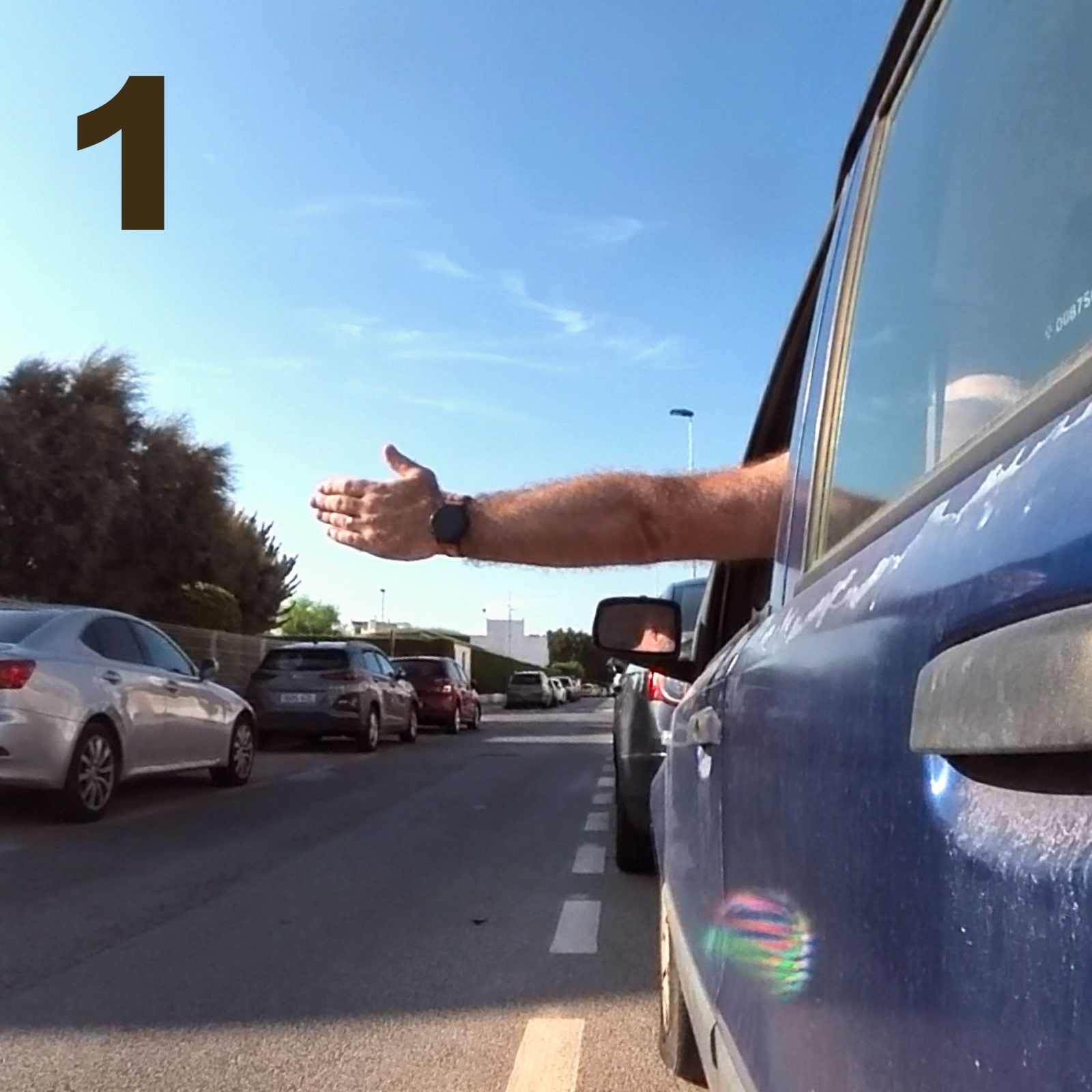
2 – I intend to turn or move to the right.
Left arm horizontal with the elbow at a 45-degree angle so the forearm points upwards, perpendicular to the floor, forming an “L” shape, palm facing forward.
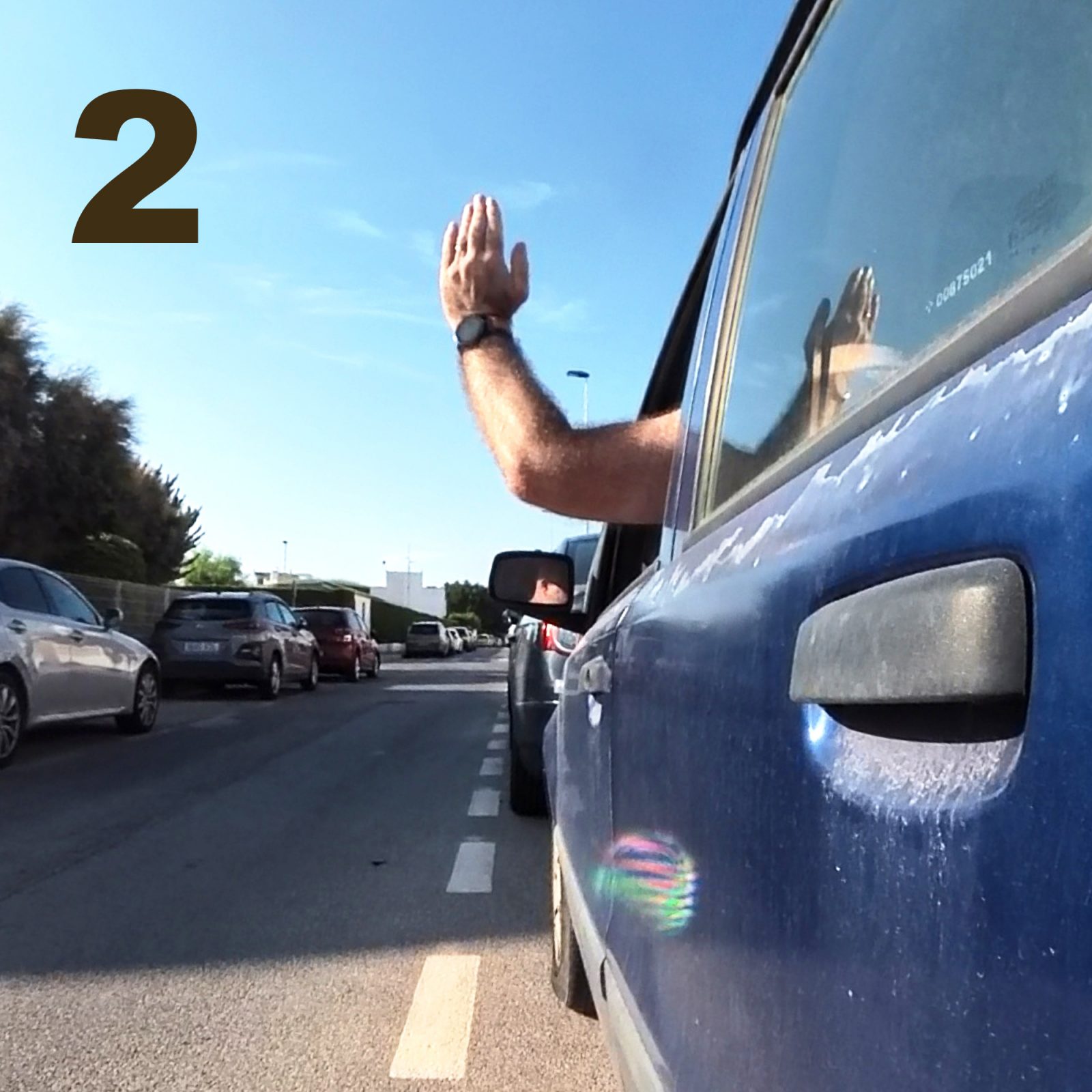
3 – I intend to slow down or stop.
Left arm outstretched, palm facing downwards, moved in an up and down direction.
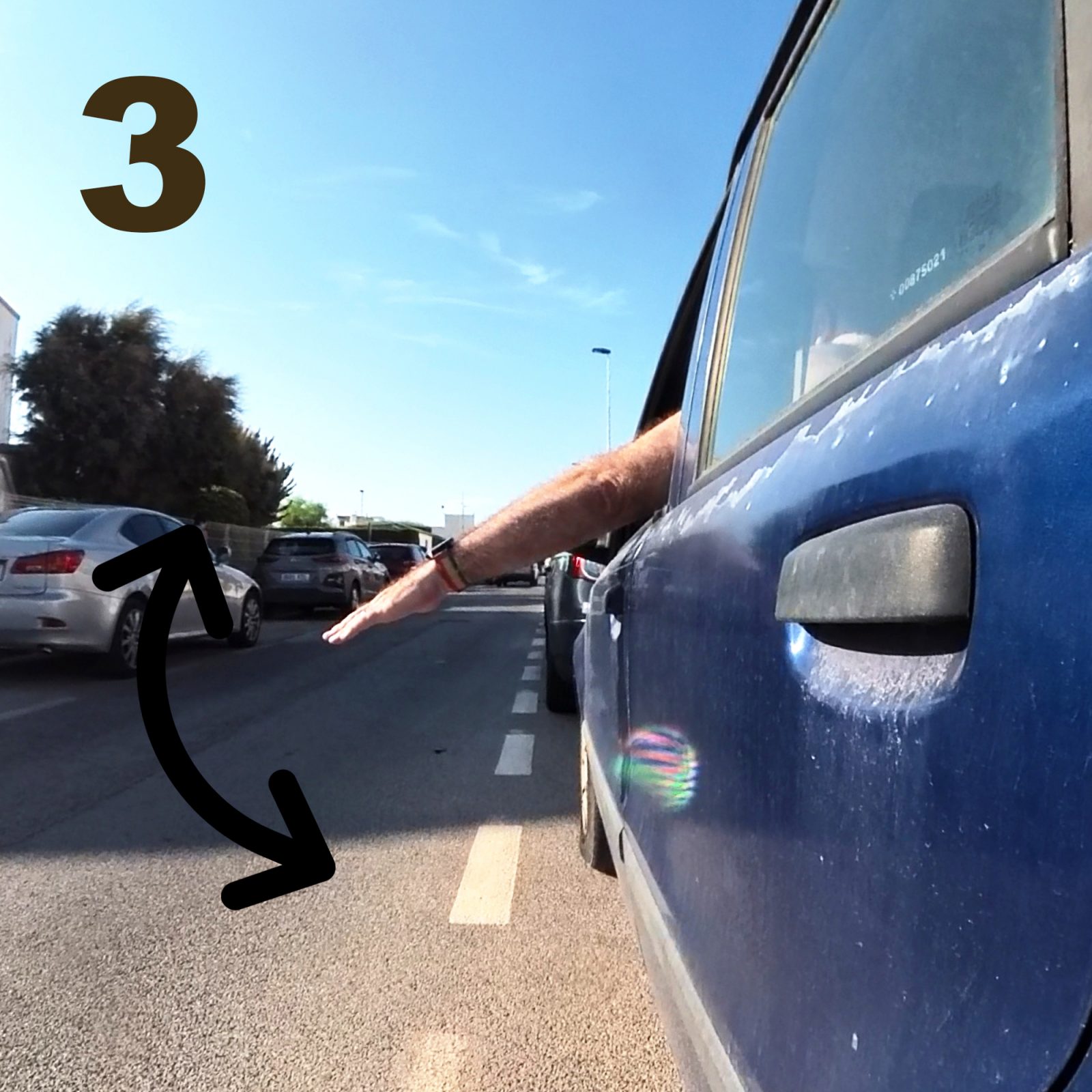
4 – I intend to reverse.
Left arm angled downwards at a reflex angle, with the palm of the hand facing backwards.
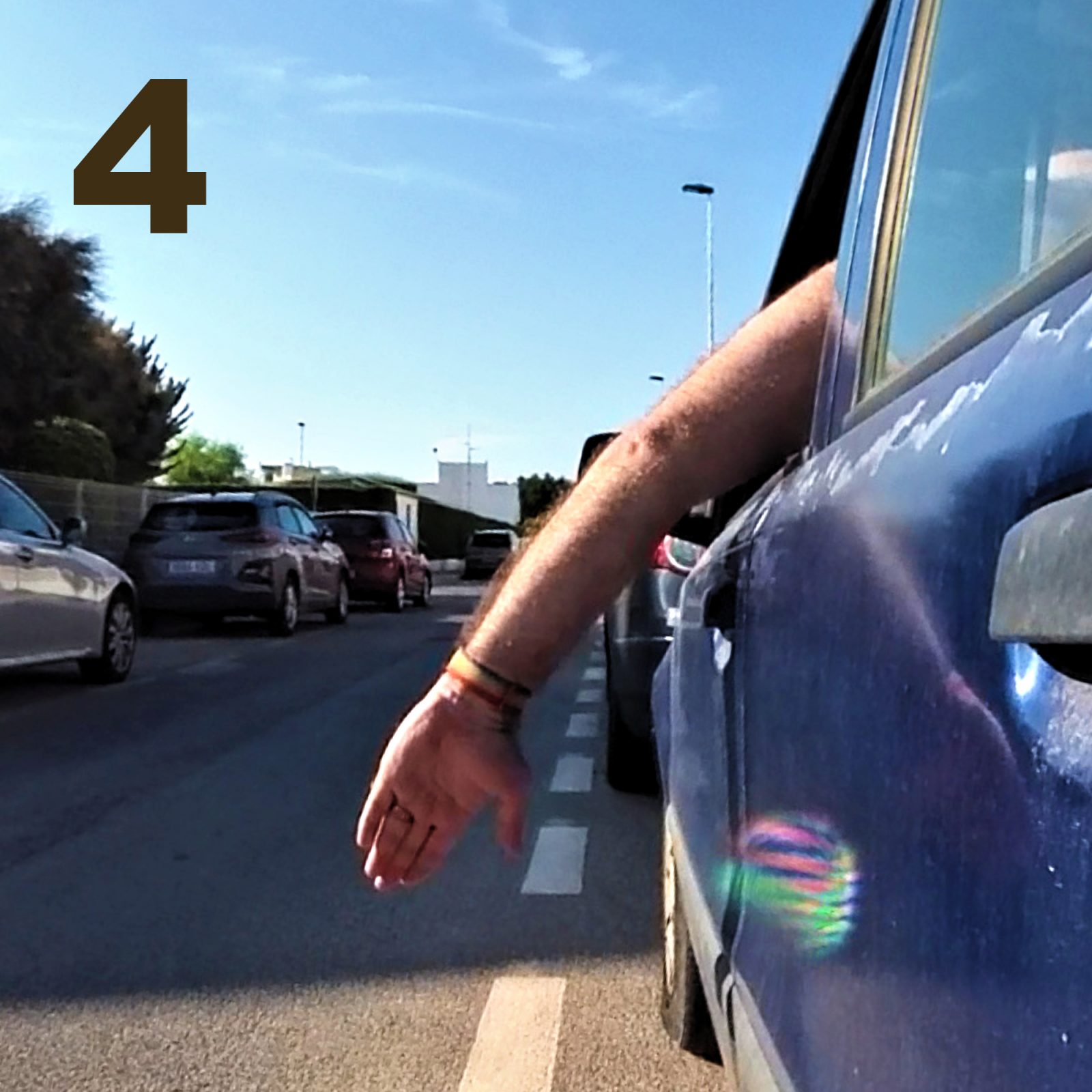
5 – Emergency situation.
Hand holding a cloth and moving in an erratic manner.
I am responding to an emergency situation and should be treated like a priority vehicle. This hand signal should be accompanied by the use of the hazard lights and frequent blasts of the horn. It should only be used in emergency situations.
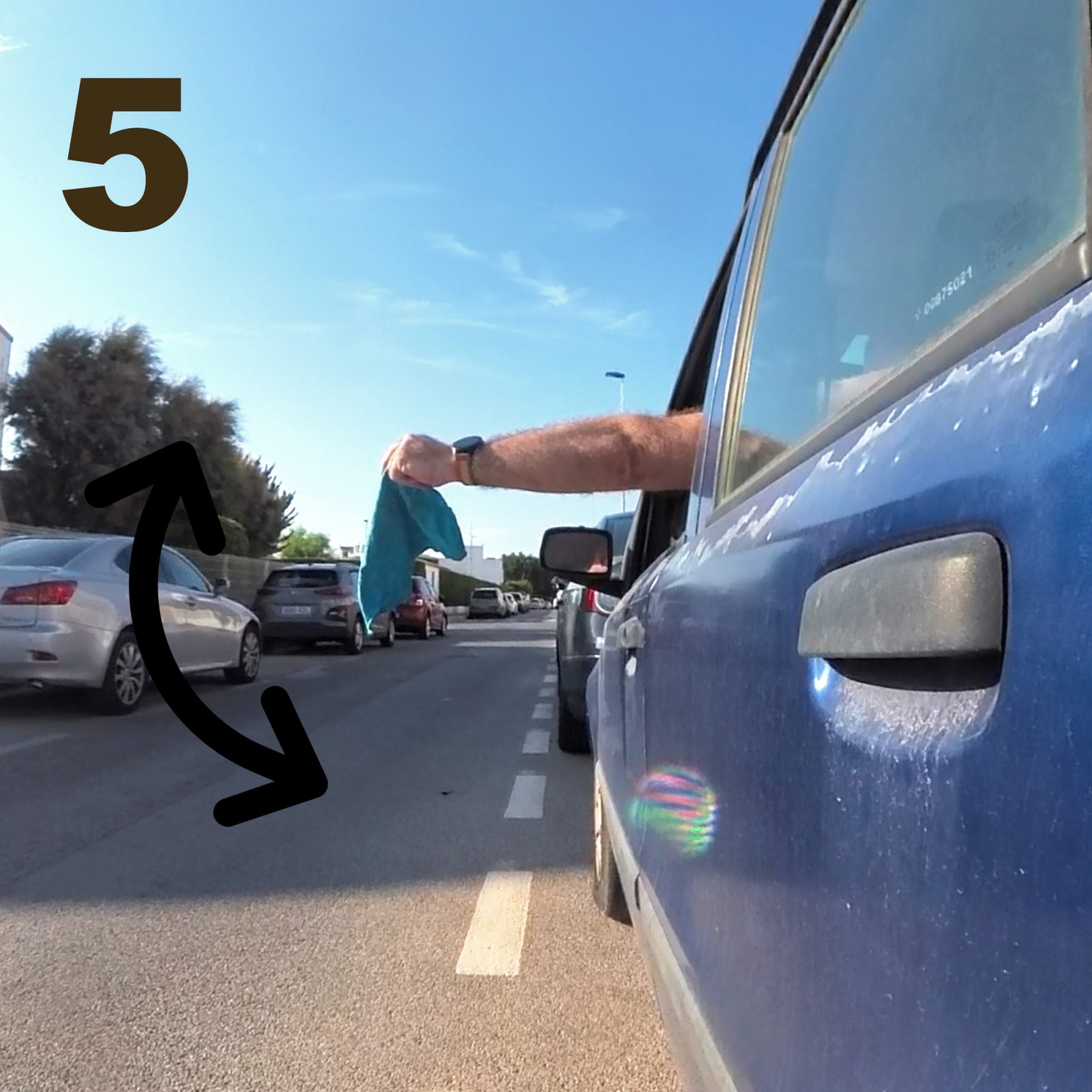
All Vehicles Must Signal
Remember, all vehicle drivers have an obligation to signal their intention, before they make a manoeuvre, and once they have checked it is safe to do so. All vehicle drivers including bicycles and electric scooters must signal their intentions.
Discover more from N332.es - Driving In Spain
Subscribe to get the latest posts sent to your email.
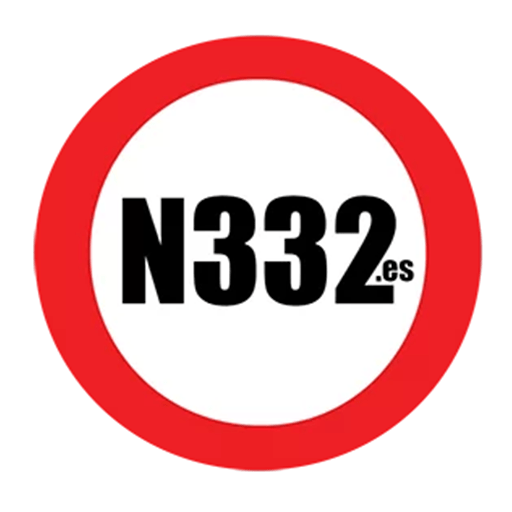
You must be logged in to post a comment.